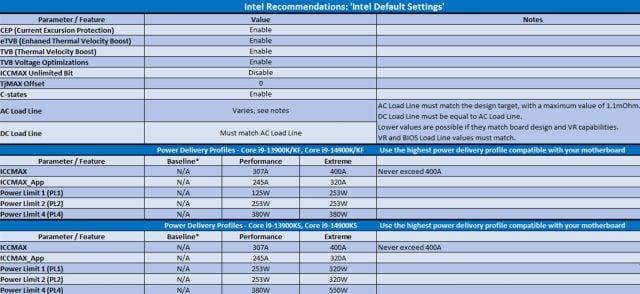Solution to Intel 13th and 14th Generation Processor Instability Problem: Default Settings

Intel has made no official statement about the instability problems experienced in its 13th and 14th generation processors. description By publishing it, he stated that the “Base Default” BIOS profiles offered by motherboard manufacturers should not be used.
The expected statement from the company about the instability problem in the 13th and 14th generation Intel processors, which has been occupying the technology agenda for months, has finally come. To fix the problem, the company recommends using “Intel Default Settings” instead of the “Base Power Profile” or “Base Default” BIOS profiles offered by motherboard manufacturers.
Why Intel Default Settings?
The reason is quite simple, the old basic default profiles are based on the old power distribution guides that the company previously offered to its partners. Since these old profiles turned out to be insufficient to ensure stability, the company offers new recommendations to motherboard manufacturers that they can implement in the BIOS.
Intel also specifically emphasizes against using “Basic Default” profiles on high-end motherboards such as the Z790 and Z690 series. This eliminates the need to buy a high-end motherboard since you need to set it to the default limits to ensure maximum stability. whirl or you cannot use the adjustment capabilities.
Motherboard manufacturers such as ASUS, Gigabyte, ASRock, MSI and Biostar will release BIOS updates in accordance with Intel’s new recommendations. The company states that processors should be set to lower power limits for stability. This may cause a decrease in performance compared to AMD Ryzen processors.

